“What does it mean to be a pilgrim?”
“How should a pilgrimage be taken?”
“Why all this walking nonsense in the first place?”
While walking the Camino de Santiago pilgrimage trail across Spain earlier this year, those questions – and many more, usually having to do with when and where I could stop for my next coffee – were running constantly through my mind.
It’s been a few months now since I hung up my hiking shoes for the last time (or rather, abandoned them in our albergue in Santiago), but I was reminded of my questions again this morning after reading Nipun Mehta’s commencement speech at the University of Pennsylvannia.
Titled Paths Are Made By Walking – after Antonio Machado’s quote, “Travelers, there is no path, paths are made by walking” – charity founder Mehta shared with the graduates about the time he and his wife walked 1,000 kilometers (620 miles) across India.
They planned to live on a dollar a day between the two of them and rely on the kindness of strangers for the rest. He says:
“Pilgrims place one foot firmly in front of the other, to fall in step with the rhythms of the universe and the cadence of their own hearts. For us, this walk was a pilgrimage — and our goal was simply to be in a space larger than our egos, and to allow that compassion to guide us in unscripted acts of service along the way.”
He calls the pace of walking “the speed of community,” something I too noticed as the Camino would often lead us through farmers’ backyards, our muddy tracks passing villagers at work in their barns and pastures.
In addition, Mehta offers an acronym he came up with after his uncle asked about what he’d learned on the walk:
W – Witness
A – Accept
L – Love
K – Know Thyself
I won’t begin to sum up the rest of his talk here, but I seriously encourage you to take a few minutes and read it here. I’ve only just begun to process all that my time on the Camino showed me – and I’m not sure I’ll ever reach any conclusions as neat as Mehta’s beautiful acronym – but I wanted to share his thoughts with you…and maybe a few more photos from my own experience walking across Spain.
So what does it mean to be a pilgrim?
I still haven’t found the answer, but I think it starts with simply taking the time to walk. Putting away our frequent flyer cards, leaving the car at home, seeing the world at a pace we can actually process. You know, slowing down.
Being a pilgrim is about looking beyond yourself.
Thinking about the ways you can reach out to those around you – even leaving notes behind for those who come after you.
Taking the time to notice the little things, especially in nature.
Like a solitary poppy, a gossamer layer of mist stretched out across the mountains on Easter morning, or glistening drops of rain hung on a tree like Christmas ornaments.
And realizing there’s power in putting one foot in front of the other.
Even when you don’t want to. Even when you can’t help but think, “What’s the point again?” Trusting that the journey you’re on is the right one and all this walking will get you somewhere in the end.

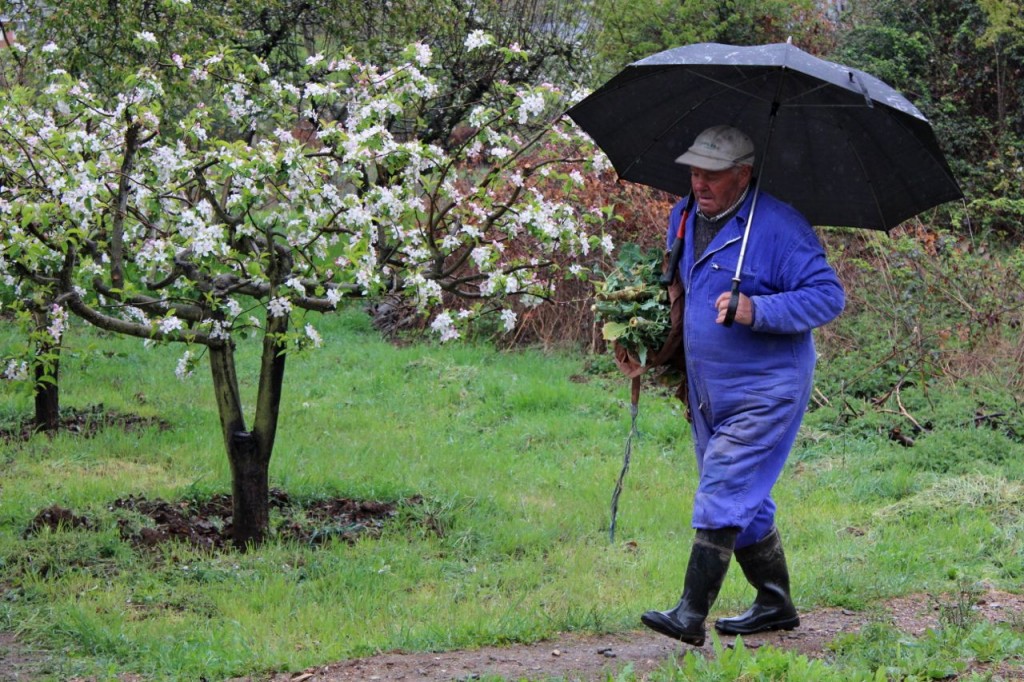
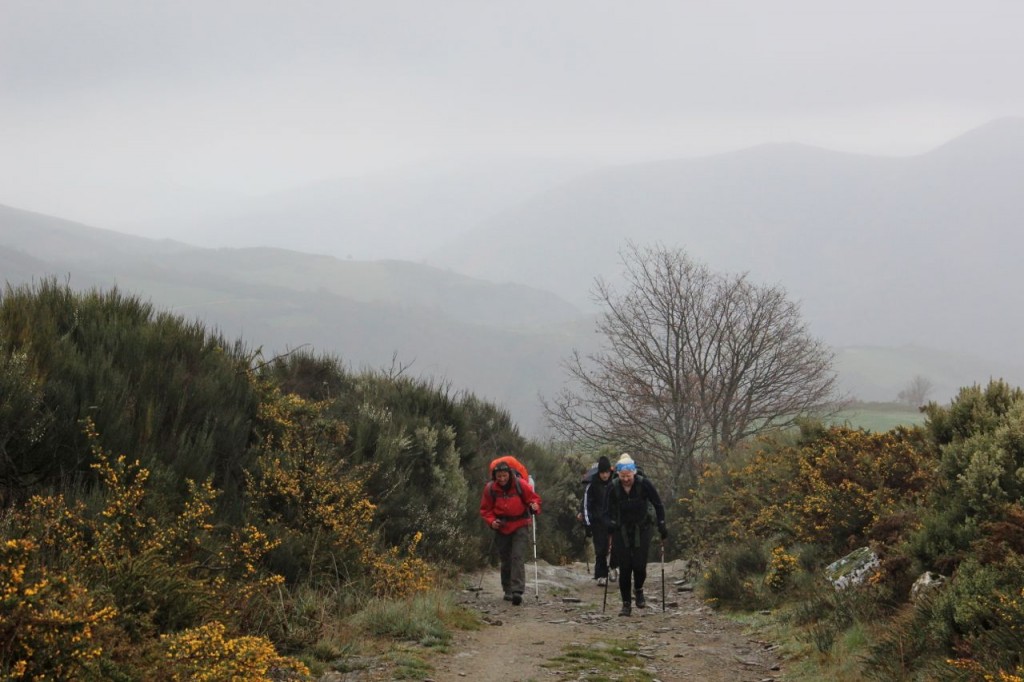
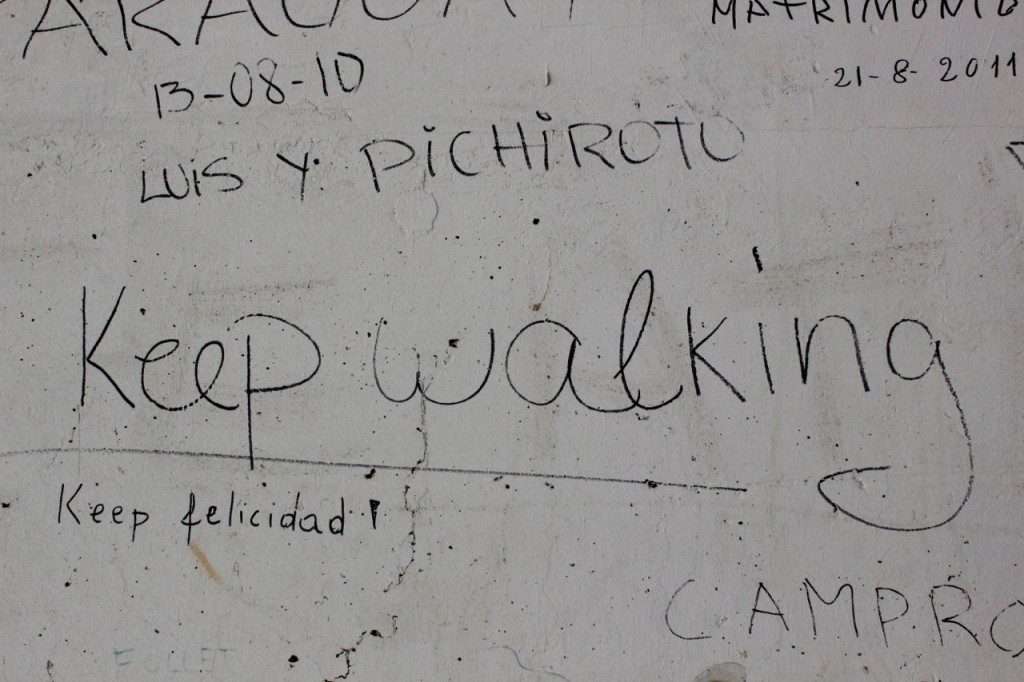
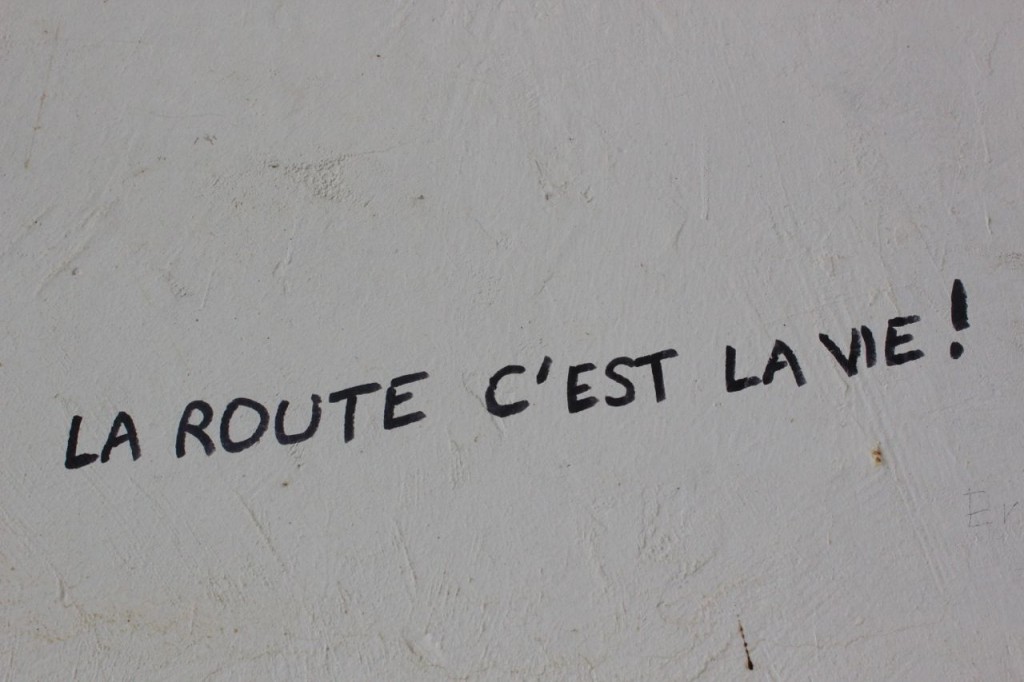
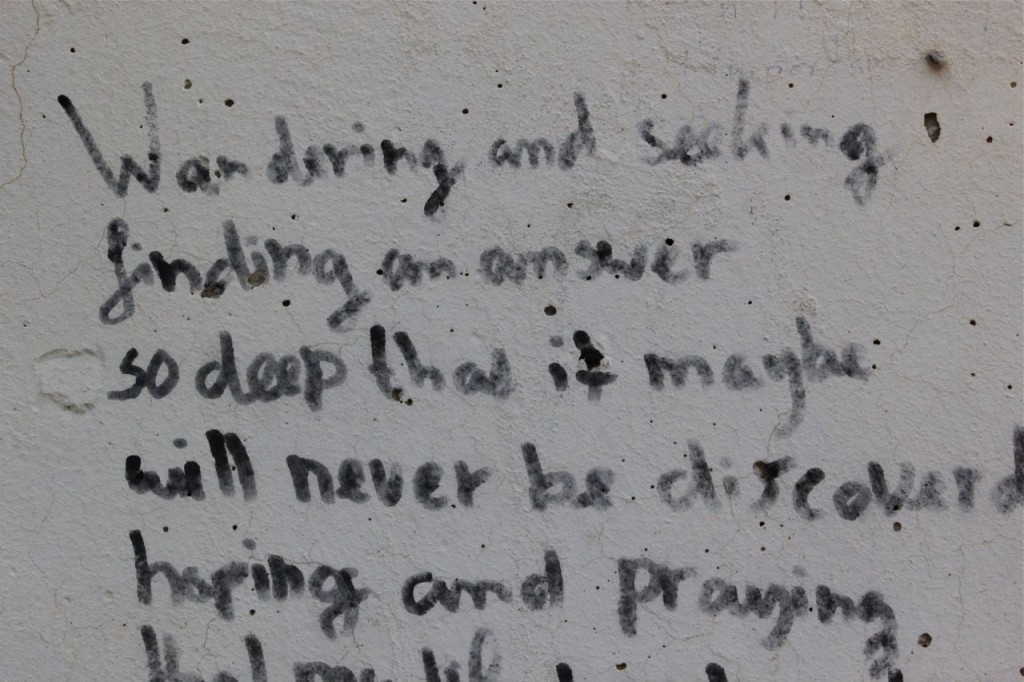
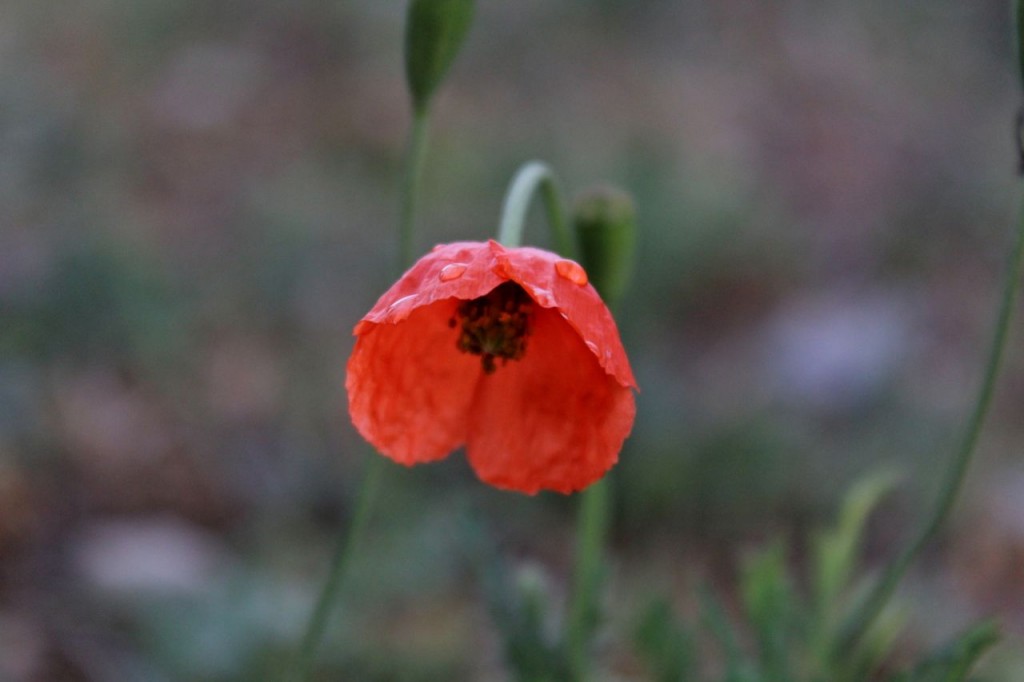
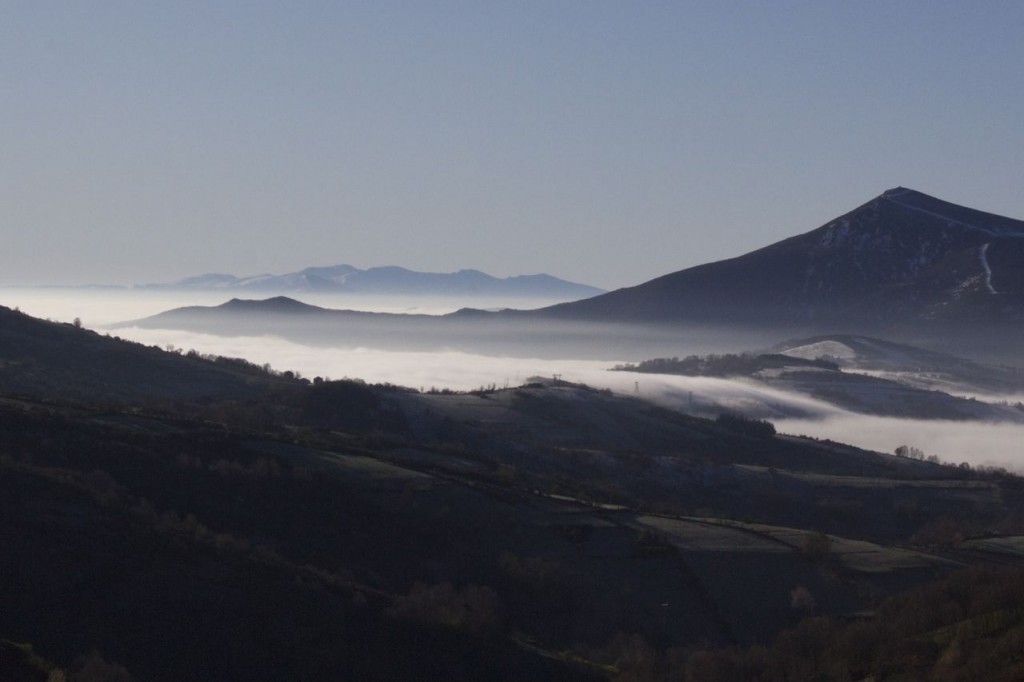
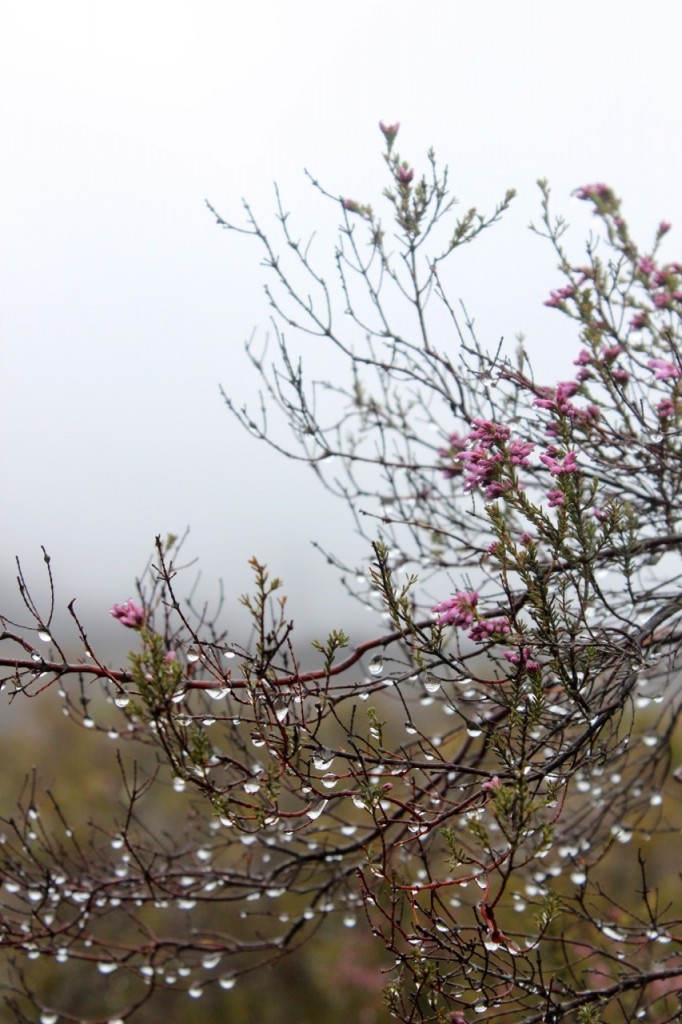
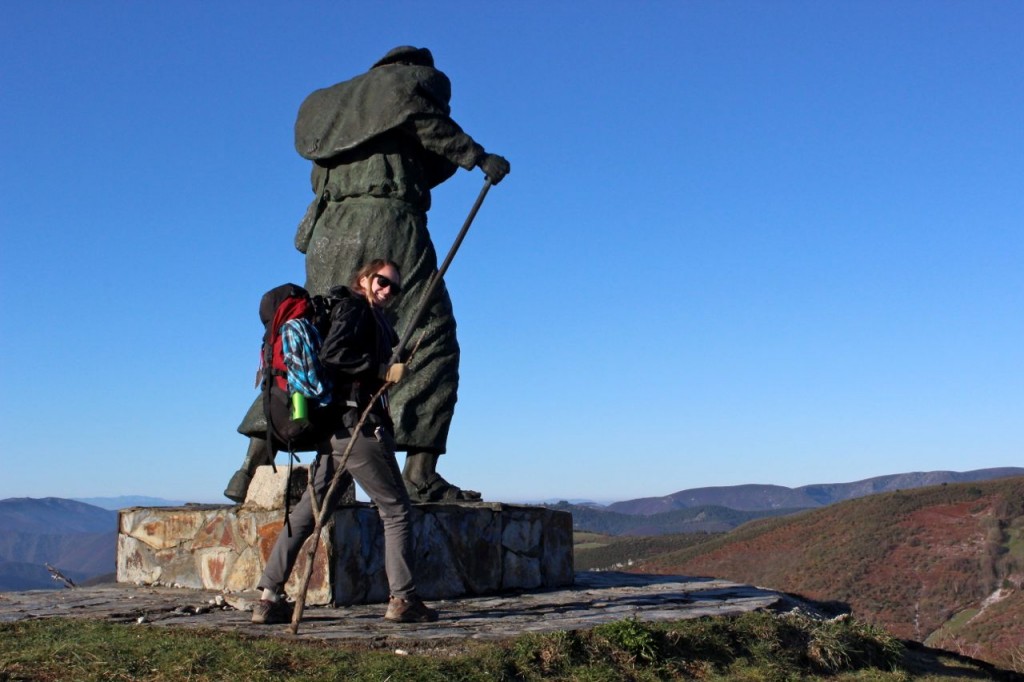
I love your point about slowing down and noticing the little things in nature during the walk. Especially nowadays that everyone has a tablet / mp3 player / smartphone that offers constant distractions, we seem to miss so much around us!!
Hey Naomi! Yes, I couldn’t agree more with you…on the Camino, I decided not to listen to my iPod for exactly that reason – I didn’t want to get caught up in the music and miss out on the nature around me. Hope all is well with you!
Clearly, I didn’t walk the Camino Santiago, but several years ago, Hubs and I walked the Camino Inka to Machu Picchu. It was only 4 days, but similar thoughts went through our heads and were whispered in mealtime conversations. Thanks for bringing those thoughts back for me.
Ah, I had no idea you walked the Inca Trail – wish we could’ve chatted about that at Pueblo Ingles 🙂 I feel that whether we walk for 4 days or 14 or even five weeks like those doing the whole Camino, it’s going to get us thinking. Moving by our own momentum, going only as far as we can carry ourselves, is so contrary to our more normal existences that it can’t help but stir up thoughts in us. Hope to talk more about this with you one day!
Thank you for reminding us to slow down. Value the rhythm of community. Americans live at 100mph speed, so your sage advice on taking moments to notice little things is exactly what I know I need to hear. Can’t wait to hear more about your pilgrimage!
Thanks for your comment, my dear mother. I love your spin on Mehta’s line – “the rhythm of community,” because I think that’s ultimately what it’s really about – shifting our internal rhythms that determine how we live our lives externally. I’m excited to keep sharing stories from the Camino with you – and I’ve even got a few videos in the works 🙂
So glad to have stumbled across your blog, Candace! I’m a former sorority girl turned traveler and now looking to start off on my own with the tarvel writing (and do the Camino next year!). Love your stuff and am excited to read more.
Hi Cat! Thanks so much for saying hello – I’m glad you stumbled across The Great Affair as well 🙂 From your own blog, it sounds like you’ve been on quite the journey too. And that’s exciting to hear you’ll also be doing the Camino – as you could probably tell from this post, I loved the experience! Will you be doing the Camino Frances or another route? Looking forward to following your blog and seeing where post-teaching life takes you.